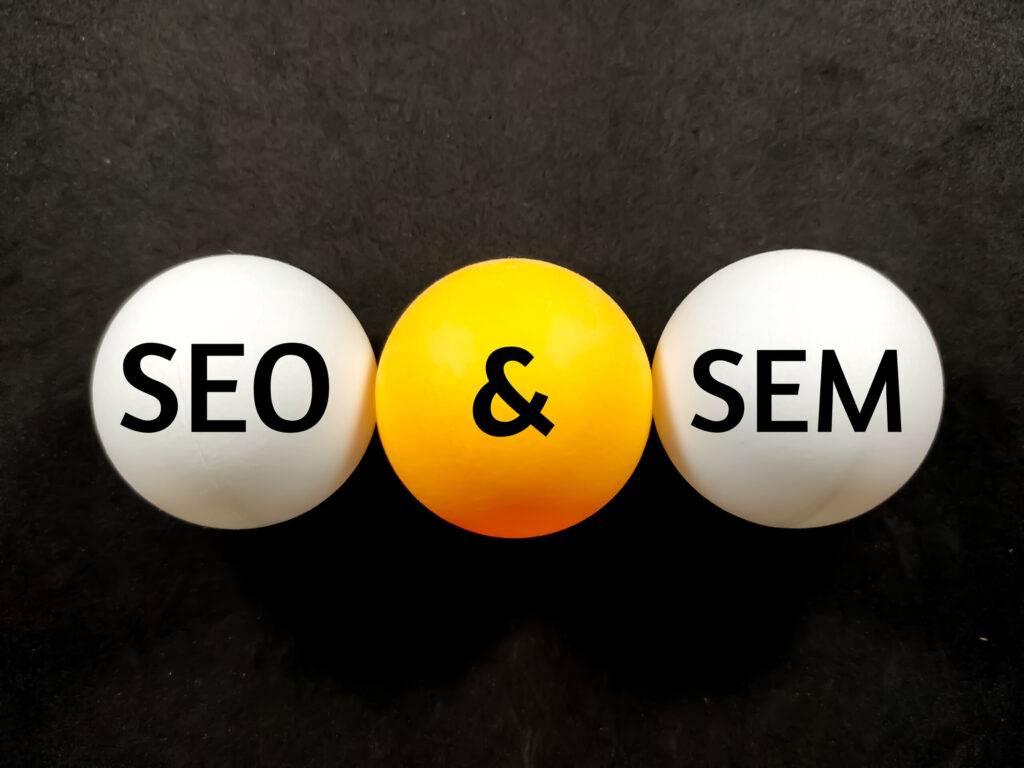Maximizing your Online Presence: The Power of Search Engine Marketing
Do you want to increase your online presence and boost your business’s success? If so, then you need to harness the power of search engine marketing. In today’s digital age, having a strong online presence is crucial for businesses of any size. And with the ever-growing competition online, simply having a website is not enough. You need to utilize effective marketing strategies to stand out from the crowd and drive traffic to your website. That’s where search engine marketing comes in. In this article, we will explore the ins and outs of search engine marketing, its strategies, and the importance of implementing it for your business’s success.
Search engine marketing (SEM) is a digital marketing strategy that involves promoting a website by increasing its visibility in search engine results pages (SERPs) through paid advertising. The goal of SEM is to draw attention to a website and attract relevant and potential customers. It encompasses a range of activities, including SEO (search engine optimization), paid search advertising (also known as pay-per-click or PPC), and contextual advertising. And with the increasing popularity of the internet, SEM has become an essential tool for businesses looking to maximize their online presence.
A successful SEM strategy starts with utilizing search engine optimization. SEO refers to the process of optimizing a website’s content, structure, and technical elements to improve its ranking in organic search results. Organic search results are those that appear naturally on a search engine results page, without any paid placement. SEO focuses on improving the quality and relevance of a website’s content to make it more website-friendly and attract more website visitors. It involves on-page and off-page optimization techniques, such as keyword research, content creation, building backlinks, and website speed optimization.
To see what can go wrong without a clear SEO strategy, check out our 8 Steps to Fail at Marketing Your Business guide.

On the other hand, paid search advertising is a form of online advertising that allows businesses to promote their products or services on search engine results pages. It involves bidding for ad placement in a search engine’s sponsored links section, known as the “ad auction.” Every time a user clicks on the ad, the advertiser pays a predetermined amount to the search engine. Paid search advertising is an effective way to attract targeted traffic to a website, as businesses can target specific keywords and demographics.
The importance of SEM cannot be overstated. In today’s competitive online landscape, businesses that don’t utilize SEM will have a hard time getting noticed by potential customers. With SEM, businesses can generate relevant traffic to their websites, enhancing brand visibility and credibility. It also allows businesses to reach potential customers who are actively searching for their products or services. Moreover, SEM offers detailed analytics, allowing businesses to track the effectiveness of their campaigns and make necessary adjustments to achieve better results.
Many people often use the terms “SEO” and “SEM” interchangeably, but they are not the same. While SEM includes both SEO and paid advertising, SEO focuses solely on optimizing a website’s content to rank higher on SERPs. SEO is a more sustainable marketing strategy, as it involves optimizing a website’s overall quality, relevance, and user experience, rather than just paying for ad placement. However, both SEO and SEM are crucial for businesses to have a strong online presence and drive traffic to their websites.
There are three main types of search engine marketing: search engine optimization (SEO), paid search advertising (pay-per-click), and contextual advertising (display ads). As discussed earlier, SEO is a long-term strategy that involves optimizing a website to rank higher on organic search results. Pay-per-click (PPC) advertising is a short-term strategy that involves bidding for ad placement in search engine results pages. Contextual advertising, also known as display ads, involves placing banners or text advertisements on related websites to attract potential customers. Businesses can choose the type of SEM that best suits their goals, budget, and timeframe.
An example of search marketing is when a user searches for “best pizza near me” on a search engine and sees a relevant ad from a local pizzeria at the top of the search results. The ad may also include a call-to-action, such as “order now” or “visit our website,” encouraging the user to click on the ad and potentially become a customer. This is an example of search engine marketing in action, as the pizzeria is utilizing paid advertising to attract targeted traffic to its website and convert them into customers.

In conclusion, search engine marketing is a powerful tool for businesses to maximize their online presence and attract potential customers. It involves utilizing search engine optimization and paid advertising to increase a website’s visibility in search engine results pages. SEM allows businesses to reach their target audiences, generate traffic to their websites, and ultimately drive conversions. By implementing an SEM strategy, businesses can stay ahead of the competition and achieve online success.
Key points:
– Search engine marketing (SEM) is a digital marketing strategy that involves promoting a website through paid advertising to increase its visibility in search engine results pages.
– SEM includes search engine optimization (SEO), paid search advertising (pay-per-click or PPC), and contextual advertising.
– SEO focuses on optimizing a website’s content, structure, and technical elements to improve its ranking in organic search results.
– Paid search advertising allows businesses to promote their products or services on search engine results pages by bidding for ad placement.
– Contextual advertising involves placing banners or text advertisements on related websites.
– The importance of search engine marketing lies in its ability to generate targeted traffic, enhance brand visibility and credibility, and offer detailed analytics for tracking campaign effectiveness.
– SEO and SEM are not the same, with SEO focusing solely on optimizing a website’s content and SEM encompassing both SEO and paid advertising.
– The three types of search engine marketing are SEO, paid search advertising, and contextual advertising.
– An example of search marketing is when a relevant ad appears at the top of search results, encouraging users to click and become potential customers.
– Businesses can utilize SEM to stand out from the competition and drive traffic to their websites, ultimately resulting in online success.


